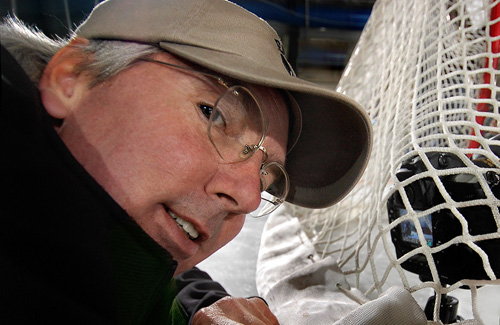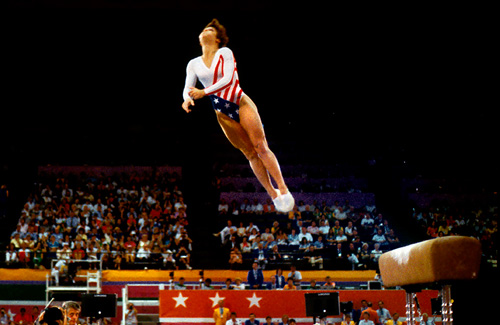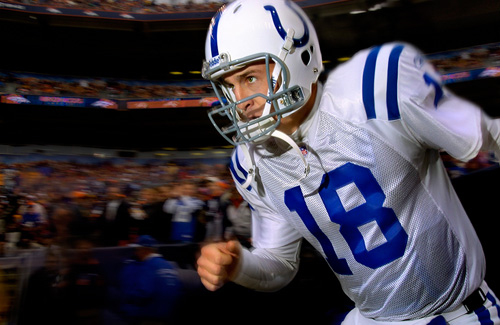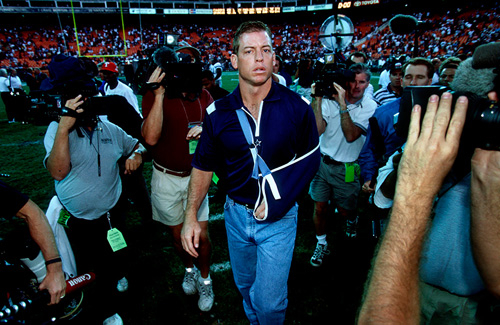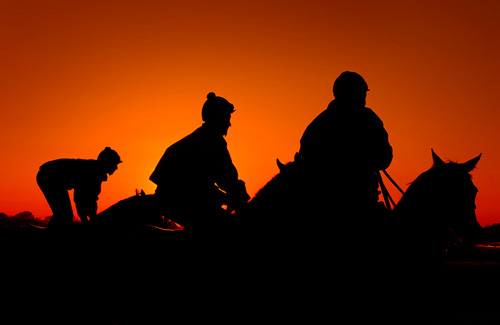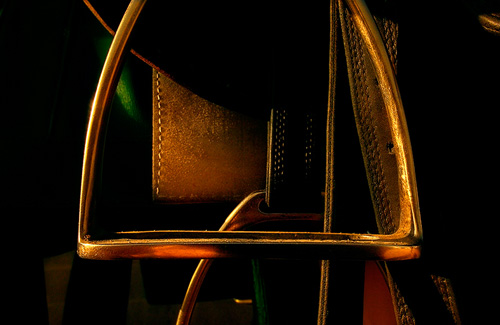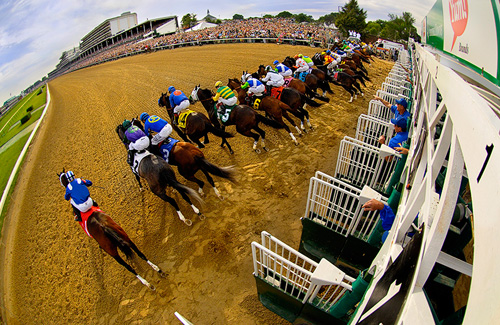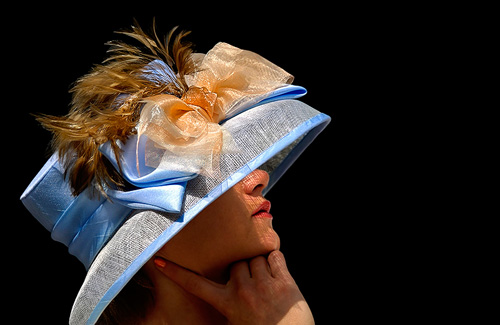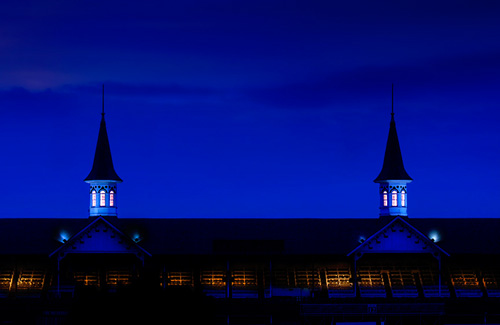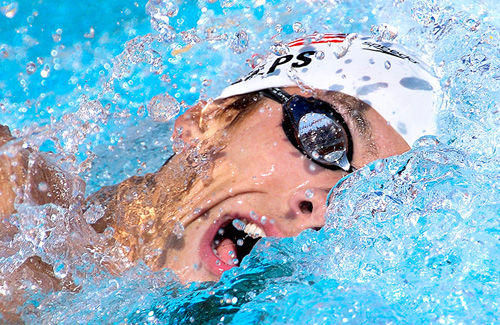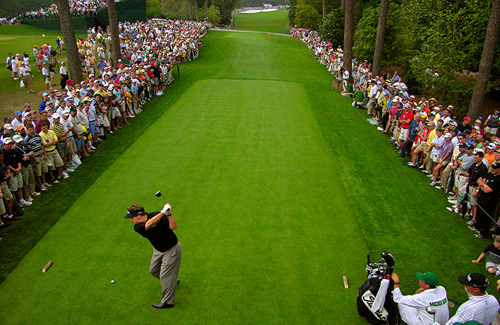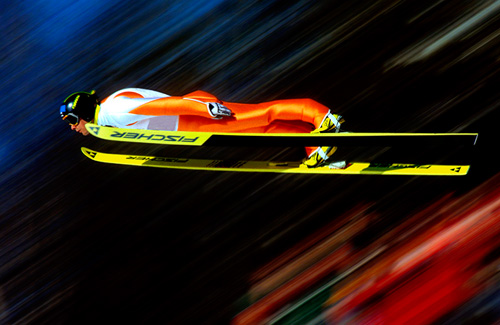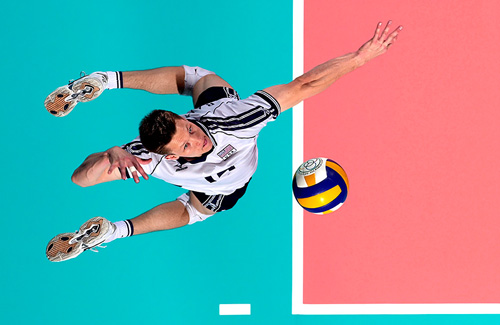Editor’s Note: This post originally ran in 2011, but the wisdom Dave shares is still applicable today! Be sure to catch Dave and many other great instructors at this year’s Photoshop World Conference, happening August 30 – September 1.
A Game Plan for Improvement
Hi, and welcome to Scott’s blog. Let me first say what a privilege it is to be asked to write an article this week. Well, as many of you know, Scott and I share a common passion and subject interest, sports photography. So it seemed natural for me to write about a sports related topic.
I’ve been on the road a lot lately and Friday was a rare afternoon at home. As I sat down to write this article I had the TV tuned to the Golf Channel’s coverage of the WGC Bridgestone Invitational. I happened to catch the interview with Tiger recapping his poor 2nd round performance. A reporter asked him if he was going to “set a lower goal seeing that he was coming back from an injury and all that has happened.” Tiger instantly answered, “No. Never have. Why show up at a tournament if you’re not there to win.”
You think Tiger has a game plan for a few more green jackets? Ya think? I have always walked into each photographic project with a game plan for improvement. It is this mindset that fuels my passion for whatever I am photographing. Passion can only motivate a person so far before improvement and encouragement is needed to continue on. During my 30 plus years of photographing Professional and Olympic sports I have applied several guidelines that have helped me improve my image making at each event I covered. Let me add that these guidelines can apply to any photographer no matter what subject they shoot. So even if you photograph weddings, portraits, wild life, landscapes or whatever, grab your seat in the front row, buy a hotdog, and enjoy the play-by-play.
Know Your Subject
I began my sports photography career as the team photographer for the men’s and women’s USA Gymnastics teams in 1980. I grew up in the sport and competed at both the High School and NCAA College level. I even coached for several years before stepping into the photography position for the US team. I knew only what I had learned in a single semester B&W photography class in college, but I knew everything about gymnastics. This in-depth knowledge of my subject, gymnastics, gave me a distinct advantage over even the best photographers in the sports magazine industry. I knew the athletes, their routines, their new skills, and all the best angles to capture the action from. It was as if I had seen a video of the competition the day before. I always seemed to be more than 1 step ahead of the photographers from Sports Illustrated, Time, and Newsweek.
So, when Mary Lou Retton landed this vault scoring a perfect 10.0 and won the Olympic gold medal she became the biggest story of the 1984 Los Angeles Olympic Games. The sport became very popular and I then became the go-to guy for Gymnastics images. This led to other major sports event coverage both Professional and Olympic, and the rest, as they say, is history. Anyone can improve their images just by knowing something about their subject. The great wildlife photographers know the habits and best season to photograph specific animals. A great wedding photographer knows the layout of the church in advance so they can move quickly into position for key moments. And the portrait photographer makes conversation and builds relationship with their subject so as to capture the mood and personality of the individual. If you want your pictures to improve, Know Your Subject, whether it’s an athlete, a bride, a moose, or the environment.
Get There Early
Back in 2003 I had the opportunity to photograph Peyton Manning of the Indianapolis Colts during the final regular season game. Sounds simple enough except that he was scheduled to only play 3 downs before being pulled to save him for the playoffs. Although I did get a nice image or two of him handing off the ball 3 times, this pre-game picture was more to the liking of my client. I had photographed Manning several times over the years and knew that he liked to come on to the field early for stretching and warm-up throws…(sound familiar? … Know Your Subject).
While other photographers were still preparing gear for the game I headed out to the field very early just to capture this image. Stylized by underexposing the image –1.3 stops and then lit using 2 Nikon Speedlights rubber-banded together, I held them well off camera in my left hand. I made a single frame of him running onto the field. Get There Early, you’ll never regret it.
Stay Late
If getting to the game early helps you make a unique picture, then staying late can also be of benefit. When Troy Aikman was injured in the 4th quarter it seemed natural to follow him off the field at the end of the game, but no other photogs seemed to think so. After all, it might be his last game, and I believe it was his last game for that season. Apparently TV also thought it was important to stick around and get coverage of him in civilian clothes and a sling.
I was the last photog on the field when Aikman disappeared into the locker room. It was a small bit of Aikman history that sold and resold several times over the course of his career. My advice is this, after the game is over and your job is seemingly done, stop, don’t pack up the gear yet, and look around to see what might make an interesting picture. More often than not, something will catch your eye, and if it does, then make a picture of it. Stay late, a good picture might be waiting for you.
Think Coffee Table Book
These next few images were made at Churchill Downs, home of the Kentucky Derby.
Whenever I cover a sporting event I try and make a collection of images as if I was working for a coffee table book publisher. Not because I am working on a book, but because I want to make a total package of documentary coverage.
You never know what the magazine editor or school’s sports information director will want. So why not give it all to them, from sunup to sundown, from close up, too wide angel, and from event ambiance to heart pounding action.
This allows your client to pick and choose, and perhaps publish more pictures. Yes, it’s more work, but so often my client would request a single image in advance, but when the magazine came out I would have several photos published that they didn’t request.
Think Coffee Table Book and watch how many more of your pictures get published. Besides, it’s just fun to make pictures.
“Go Big or Go Home”
This is a quote from Mike Powell, one of the former owners of the All Sport picture agency, which became the sports division of Getty. What he meant by this was if the photographer next to you is using a 300mm lens, you should use a 400mm. If they are using a 400mm, then you should use a 600mm. And, if they use a 600mm, then put a 1.4 teleconverter on your 600mm. Simply said, use a longer lens to draw in your subject and make a different picture than your colleagues do.
Here is Michael Phelps winning gold at the 2004 Summer Olympics in Athens. Swimming imagery is all about the face, but that’s a very small subject within the Olympic pool. Most photographers had 400mm or 600mm lenses, but I went with a 600mm and 1.4 teleconverter all on a Nikon D2h with DX sensor. Yikes! Some would ask why not just crop the image later, because I want to capture it in such a way that it would have impact when my editor opens the file. I want my picture to get noticed immediately, and have a chance of making the cover, or a double page spread. It takes practice and sometimes it takes courage, and sometimes you can fail, but for sudden impact, Go Big or Go Home.
Have An Edge
I had shot very little golf coverage during my career prior to being asked by Golf Digest to do documentary coverage of the Masters. I would be part of a team of 4 other photographers who were the best in the golf business, and here I was, no one in the business of golf. I felt I needed to walk into Augusta with an edge that would help my work standout and contribute to the coverage. I had brought all my normal cameras with long lenses, but decided to include a small Nikon Coolpix 8700. Sounds crazy, but I felt I could use the silent shutter of this small consumer camera to capture a very rare moment in golf, the top of the back swing.
Clicking the shutter on a 35mm DSLR camera is highly unethical at golf tournaments. The abrupt sound can cause a golfer to loose concentration and result in the golfer’s caddie grabbing your camera and throwing it into the lake, not to mention having your credential taken away. The silent shutter of the Coolpix 8700 along with its RAW file capability was my edge. The editors were blown away when the first round of back swing images came across the computer screen. “STOP!” they said. “You’ll get us all thrown out.” “It’s OK,” I said. “The shutter is silent.” Here is Phil Mickelson at the top of his back swing making his final drive off the 18th tee on route to winning his first major, the 2004 Masters. Have an Edge, and walk in with confidence knowing you can offer your client something new and unique.
Take a Chance
I don’t think of myself as a gambler. My wife would suggest otherwise and say my entire business as a freelance photographer is based on taking chances. After all, I have no daily guarantee of being hired, of making picture sales, or of receiving a paycheck at the end of the month. Well, here I am, still in business 30 plus years later partly because I do take some chances.
Most of the photographers at the 1994 Winter Olympics used fast shutter speeds to freeze the 85mph flight of the Sky Jump finalists, but not me. I took a chance and decided to use a slow shutter speed of 1/30 during the entire competition. This included photographing the jumps of the eventual Olympic medalists. Not an easy task seeing that I was using an F3 film camera with a 600mm f4 lens and a 1.4 teleconverter…hand held (a monopod tends to sink in deep snow). My editors at Newsweek applauded the risky approach and the unique images. So, Take a Chance, you might win.
Capture the Moment
If you don’t capture the key moment, you’re toast. Simple as that.It’s not going to go well for you back at the office.
This image of Kevin Barrnet serving up the winning point during the final game of the World League Volleyball Championships was one of Sports Illustrated’s first digital Leading Off images. Many of the guidelines and advice that I have mentioned contributed to the making of this picture. Although I’m not an expert on volleyball I did Know My Subject from previous competitions and was very familiar with Kevin’s perfect serving style. Once Jimmy Colton, SI’s picture editor, had assigned me the championships, I began planning my Coffee Table Book approach so that I could provide plenty of choices regarding the magazine’s Leading Off section.
I Got There Early during the practice days prior to the week of international competition and spent time with the event organizers in an effort to secure permission to do something special. My Edge would be to install my Nikon D1 as a remote camera in the catwalk over the colorful court, and use Sport Strobe Lighting to illuminate the court. I would trigger the camera/strobes using the wireless Pocket Wizard system from my courtside photo position. This would of course mean I would need to Stay Late after the court was cleared to retrieve the remote camera and shut off the strobes. In 2001 digital imagery was quite new to the magazine industry and I felt I would need to compose the scene very tight in order to have enough quality to be published as the Leading Off double page spread. Cropping the image was not an option so I decided to Go Big rather than Go Home and used a 70-200mm lens at 200mm. To Take a Chance like this is very risky, but I felt that if I could pull this off I would have an exceptional image. This image is not cropped. All my planning and careful study of Kevin’s airborne serves helped me position the camera precisely over the area of court where he achieved perfect form. Capturing The Moment of Kevin serving the final match point to win the World title for the USA was just what SI expected, as did I.
Well, there you have it, A Game Plan for Improvement. Perhaps more effort than some would care to apply, but when a photographer, regardless of their chosen genre, incorporates even some of these guidelines into each event, portrait, wedding, or landscape they photograph, I guarantee that their imagery and their clientele will improve significantly.
It’s been a pleasure to write this article for Scott’s Guest Blog. I hope you have enjoyed the images and commentary.
You can see more of Dave’s images and teaching articles at DaveBlackPhotography.com, keep up with him on Instagram, watch his classes over at KelbyOne, and catch him on the upcoming Photoshop World Conference!



